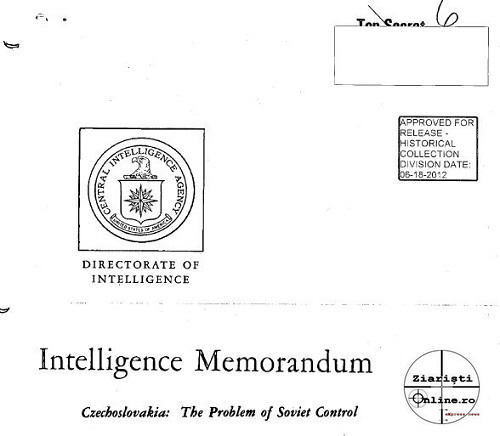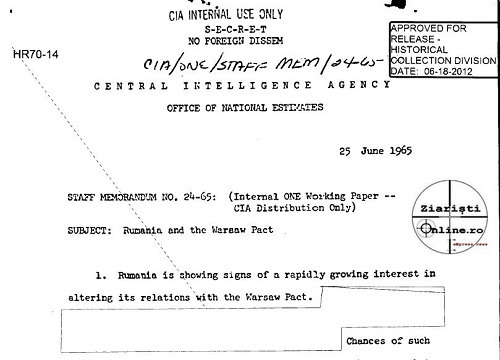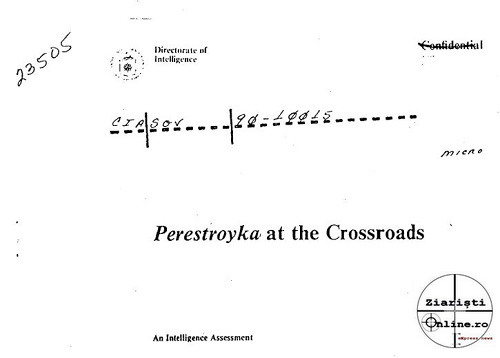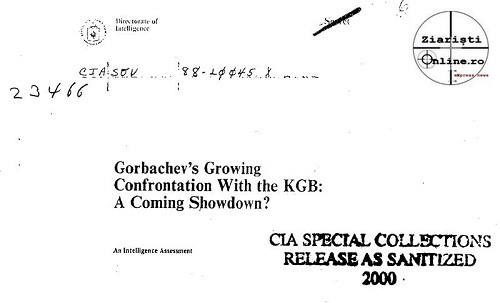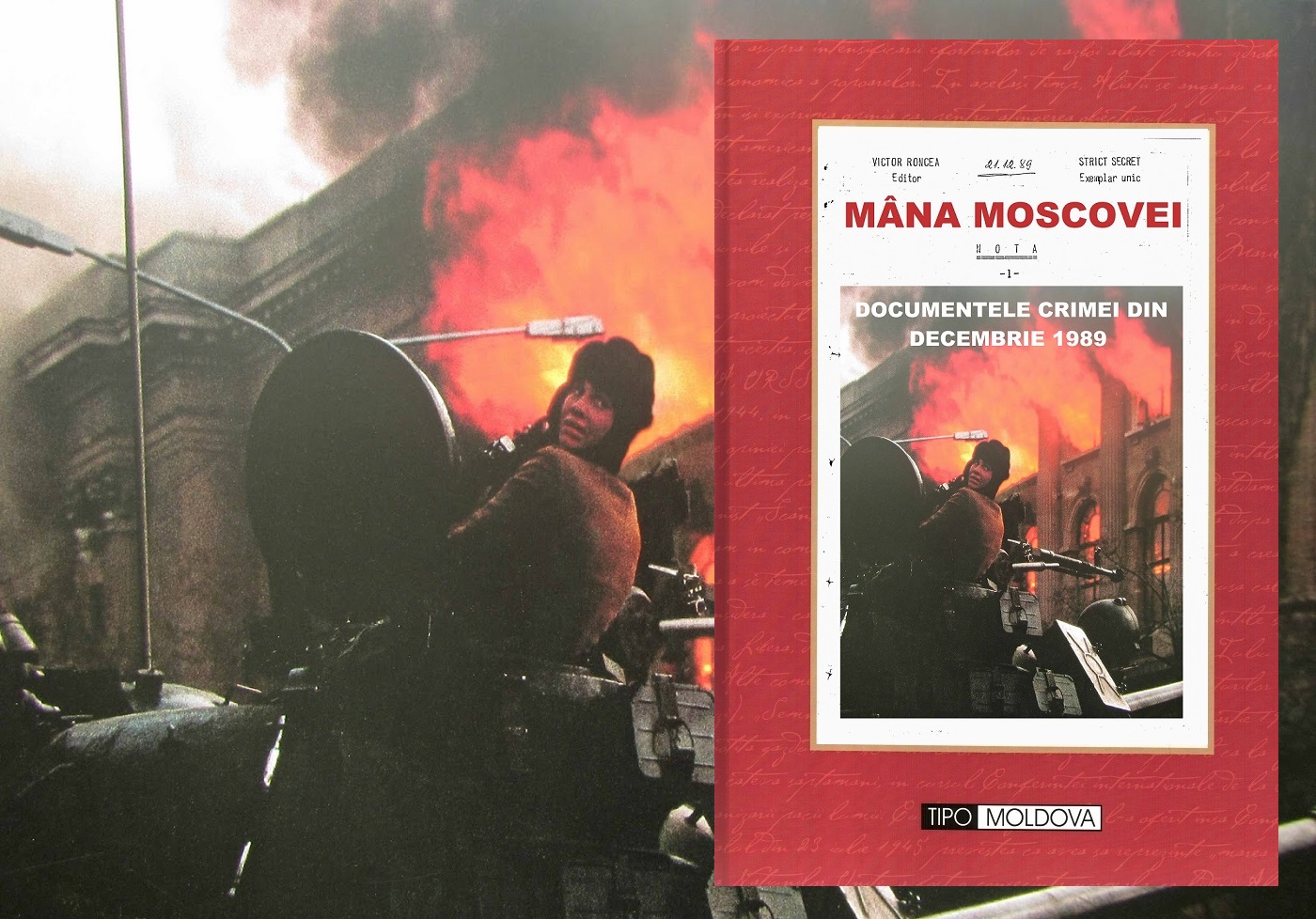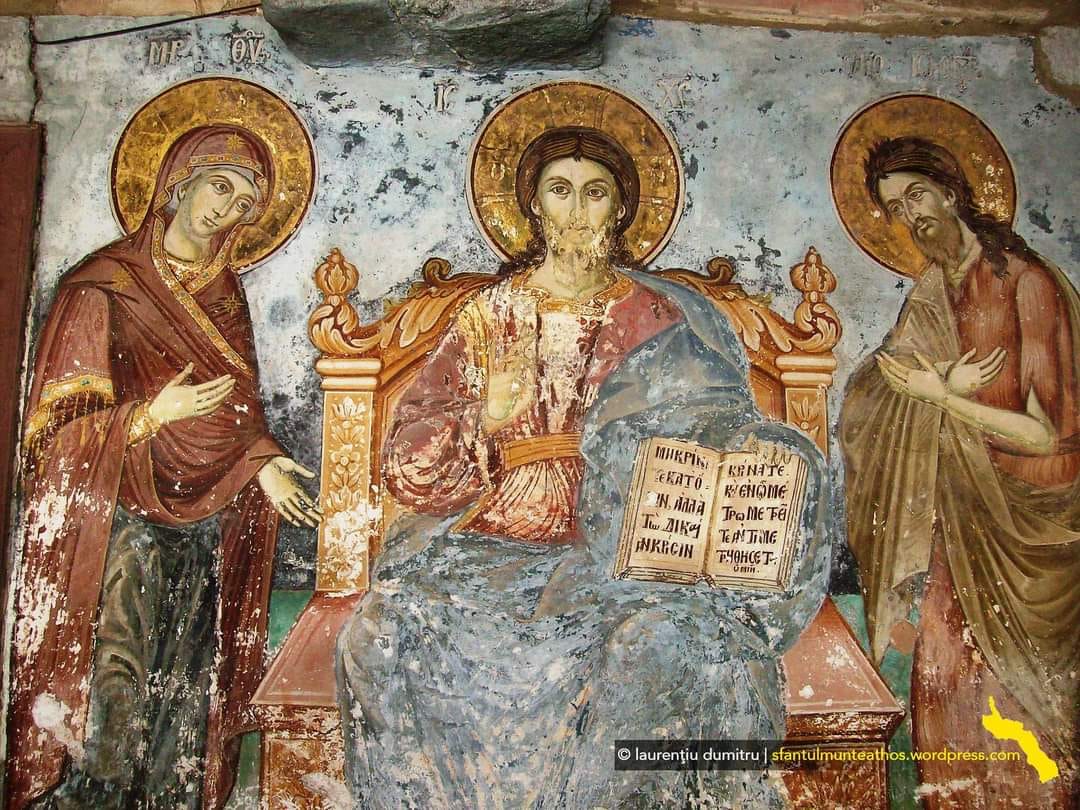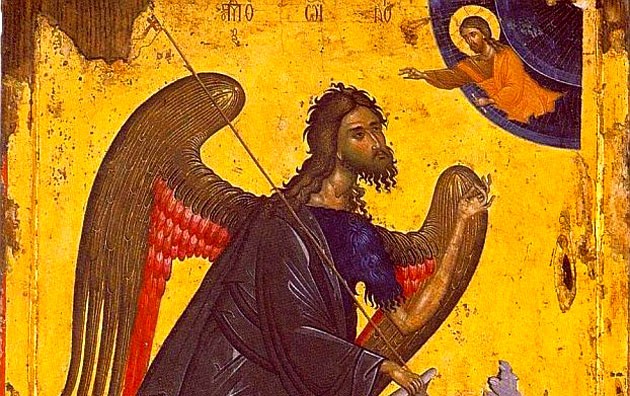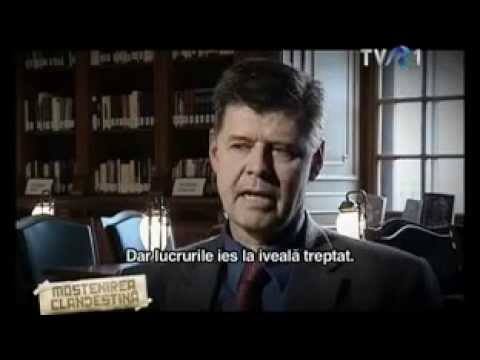 Conversation overheard at an unspecified Customs and Passport Control point
Conversation overheard at an unspecified Customs and Passport Control point
(possibly at the border with one of Russia’s neighbors)
Customs Officer: Nationality?
Tourist: Pусский.
Customs Officer: Occupation?
Tourist: Нет. Нет. Я только посещение!
The use of “tourist” cover by KGB, GRU and regular Soviet Army officers was employed within the Soviet bloc on more than half a dozen occasions between 1956 and 1987. On a number of occasions (Poland 1956, 1980 and 1981, Romania 1968 and 1987) such “tourism” was not accompanied by any observably hostile action, as if the deployment was based on a contingency that did not occur or for an operation that Moscow, in the final analysis, chose not to authorize.
Did the USSR have sufficient motive for deploying “tourists” in Romania in 1989?
Post-mortem assessments of the invasions of Hungary in 1956 and Czechoslovakia in 1968 by U.S. intelligence concluded that Moscow’s principle motivation for military intervention was the loss of Soviet control; either intentionally, when local leaders attempted to withdraw from the Warsaw Pact, or unintentionally, because of serious domestic instability. ( Czechoslovakia: The Problem of Soviet Control, 16/01/70)
Former Warsaw Pact Chief of Staff Anatoly Gribkov confirms that a principal motivation for the 1968 invasion was fear of a “possible loss of Soviet control over the Czechoslovak armed forces – indeed, in the future there could arise the question of Czechoslovakia’s departure from the Warsaw Pact. As a result, there would take place an inevitable weakening of the European borders of the Pact, followed by a revision of the post-war order in Europe and the break-up of the East European system of military security as a whole. The Soviet leadership drew an analogy with Hungary’s attempt to withdraw from the Warsaw Pact.” (A. I. Gribkov, Sud’ba varshavskogo dogovora: Vospominania, Dokumenty, fakty [Part of the Warsaw Pact: Recollections, Documents, Facts], (1998): 117-118)
Did Moscow harbor such concerns regarding Romania? It certainly did. Already in 1964 Khrushchev argued that leaving the alliance was “exactly what the Romanian leaders want” but that allowing it would be “totally and disastrously wrong.” On the contrary, Khrushchev insisted, the “whole Balkan situation would become untenable” if Romania were to withdraw and it was “the responsibility of the Party to stop Romania leaving the Pact.” Soviet Defense Minister Rodion Malinovsky referenced contingency plans in case of an attempted departure, underscoring that French assistance would hardly be of “any help to the Romanians in resisting a blitzkrieg from the Warsaw Pact,” while Khrushchev stated that “if they’re so blind as to try and leave the Warsaw Pact, then our soldiers, not de Gaulle, will have the last word.”(J. Sejna, We Will Bury You (1982): 74-76)
As the CIA noted in 1965: “Certainly the evidence suggests that Bucharest would at least like to leave the Pact” and that, by attempting to do so, it would provide the “one very telling reason why the Soviets might actually use force”: “to preserve their empire, not only in Rumania but throughout Eastern Europe. A failure to intervene would signal to the other Eastern European states that the USSR had either deliberately decided to let the empire break up or that it was powerless to prevent it.” (Rumania and the Warsaw Pact, CIA/DI/ONE Staff Memorandum 2465, 25/06/65)
In July 1967 Brezhnev announced to the other Pact members (plus Yugoslavia’s Tito) that he anticipated Romania’s imminent withdrawal from the alliance. KGB sources confirmed that “such anxieties about Eastern Europe as existed in Moscow Center when Andropov became chairman [in June 1967] centered on Romania,” and that “ironically, there was far less concern about Czechoslovakia” than about Romania at the beginning of 1968. (Document 2 in J. Hershberg, The Soviet Bloc and the Aftermath of the June 1967 War, J. Hershberg, The Soviet Bloc and the Aftermath of the June 1967 War; O. Gordievsky and C. Andrew, KGB: Inside Story (1990): 481-482)
Clearly, Moscow perceived the same causa incursio in Romania and Czechoslovakia – a potential withdrawal from the alliance and collapse of Soviet security architecture. Defense Minister Andrei Grechko told the Soviet Politburo in May 1968 that Bucharest was “seriously considering full withdrawal from the Warsaw Pact” and if it did then “the Pact would not be able to hold together.” (M. Ouimet, The Rise and Fall of the Brezhnev Doctrine in Soviet Foreign Policy (2003): 17)
Why then did the USSR and loyalist bloc members not invade Romania earlier? The standard myth is based on the tautology that Romania was not invaded because it lack any strategic importance for the Soviet Union, and that insignificance is proven by the lack of Soviet invasion. According to General Gribkov, however, Moscow’s ability to command the Czechoslovak defense minister to order his army not to resist was a decisive factor in the Soviet decision to invade in 1968. Gribkov advised against invading Poland in 1980-81 precisely because he believed the Polish military to be “battle ready and in a patriotic frame of mind,” and therefore likely to join in any “struggle against our troops and the other allied troops.” (Gribkov (1998): 119-147)
Gribkov was equally clear on exactly where Romania stood along the spectrum bounded by Czechoslovak submission and anticipated Polish defiance. The Romanians, Gribkov observed, had immediately “adopted a doctrine of defense of the entire people,” “secretly redeployed” their best troops “close to the Soviet border,” prepared for the “destruction of aircraft and airborne troops,” refused permission for the Soviet Warsaw Pact commanders “to land at Romanian airports or to fly across its territory to Bulgaria without written permission,” and threatened to shoot down unauthorized Soviet aircraft. (Gribkov (1998): 75-76)
The CIA concluded that aside from the communist party holding a monopoly of power two internal conditions had to be met before Moscow would intervene. First, “the local Party must be alienated from the people” and, second, “the local leadership must be capable of fragmentation.” Neither of these conditions held true for Romania in 1968. Both conditions had been fulfilled by December 1989. ( Czechoslovakia: The Problem of Soviet Control, 16/01/70)
It bears emphasis that the Romanian “threat” to Soviet interests was not limited to its possible departure from the Pact or internal destabilization. Bucharest actively challenged Soviet policy, “caused harm to USSR interests,” and endangered Soviet security across a broad range of issues within the Soviet bloc and internationally.
According to the Kremlin, there was virtually no chance that Romania would voluntarily stop pursuing “relationships with the principal powers that oppose us, in the contemporary world, not only in the political domain, but also in the economic, military, cultural, etc., diminishing, at the same time, real collaboration within the framework of the Warsaw Pact and the CMEA.” Meanwhile, Bucharest undercut Soviet foreign policies in Africa, Latin America, the Middle East and Asia, for example, by “warning” Khomeni after the fall of the Shah “not to invite specialists of the USSR into Iran,” and advocating moves of an “overtly anti-Soviet character” to the Afghanistan Democratic Republic in the spring of 1979, weeks before the Soviet forces that would lead the invasion were infiltrated into Kabul under cover. (Documents 1-4 in L. Watts, The Soviet-Romanian Clash over History, Identity and Dominion (2012))
In Moscow’s view, Romania pursued the destruction and “disintegration” of the alliance from within, by lobbying other Pact members “to combat together, through joint action, the actions and measures of the USSR within the CMEA and the Warsaw Pact, as well as on many other questions connected with the communist and workers movement and the resolution of a series of problems of international importance.” According to Soviet military leaders, Romania had “prejudiced the defense efforts of the countries participating in the Pact during times of peace, as well as in case of an armed aggression.” (Documents 2-4 in L. Watts, The Soviet-Romanian Clash over History, Identity and Dominion (2012))
By the late 1980s Bucharest’s campaign to transform the alliance out of existence caused serious concern in Moscow. According to other Pact members, Romania refused “to allow any strengthening of alliance structures,” and aimed instead to achieve the “weakening” of the alliance. Soviet officials likewise reported that Romania pursued an “obvious” policy of “dismantling the organs of political and military cooperation within the Warsaw Pact.” (Romanian Proposal For Warsaw Pact Reform: Information Regarding The Romanian Proposal, 08/07/88; Joint Memorandum of the [Hungarian] Foreign Ministry and the Ministry of National Defense on the Future of the Warsaw Treaty, 06/03/89, http://www.php.isn.ethz.ch; Document 3, 24/02/89 in CWIHP Bulletin 12/13 (2001): 69)
Romania now also posed a destabilization threat to Soviet security. During 1983-1985 the KGB’s London resident received multiple requests “for intelligence on Western attitudes to Romania” because KGB Center believed it to be on the verge of an economic collapse that would result in “loss of control by the regime” and a Romanian “turn toward the West.” Soviet officials feared the same in 1989. The Soviet foreign ministry warned in February that, the most likely scenario entailed “the danger of a decisive shift of the country in the direction of the West (including its exit from the Warsaw Pact),” after which “financial and material support from the West, highly probable if there are real changes, may prove to be very effective for a country possessing a good deal of natural and economic resources.” (Gordievsky and Andrew (1990): 641; Doc. 1, 02/89 in CWIHP Bulletin 12/13 (2001): 57-59)
Hungarian communist officials insisted to Western media in July 1989 that Moscow’s “priority is to maintain the system of alliances,” and that “the Soviet Union considers it essential for Romania to remain a [member of] the Warsaw Pact.” The sigh of relief in the Kremlin was almost audible when Romania’s provisional authority announced in December that it would respect its obligations to the Pact. (M. Shafir, “Matyas Szűrös’s Interview with RFE’s Romanian Service,” Radio Free Europe, 20/08/89; Background Report/127, RFER, 20/08/89; TASS, 23/12/89)
Perhaps the greatest problem that Bucharest’s “separate course” presented for the Kremlin was its impact on the approximately 3 million co-ethnics in the contiguous Soviet Moldavian and Soviet Ukrainian Republics. Romania’s defiance made it a point of attraction and a dangerous example of independent behavior vis-à-vis Moscow Center. And Soviet officials repeatedly complained of Moldovan susceptibility to Romanian “subversion” during the 60s, 70s and 80s; while undertaking actions to combat that threat. (Documents 23, 28, 33, 41 in E. Negru and G. Negru, “PCM şi Naţionalism (1965-1989),” Destin românesc, 16, 5-6 (2010))
Moscow thus had a variety of serious motives for considering an intervention in Romania. More, in fact, than it had regarding any other member of the Soviet bloc. But did these motives persist under Gorbachev’s “New Thinking”?
By 1988 Gorbachev began signaling a change in Soviet policy to the effect that the Brezhnev Doctrine was no longer applicable in Eastern Europe. Few Pact members believed him sincere at the time, partly because of the continued use of violence within the USSR. (And the legitimacy of that skepticism was apparently confirmed by Gorbachev’s later authorization of commando operations against independence movements in Lithuania, Latvia and Azerbaijan.)
However, even as Gorbachev applied “New Thinking” to Eastern Europe generally speaking, the Kremlin still held Romania to be an area of special strategic interest because of its links with and attraction for the majority population in the Moldavian Soviet Socialist Republic – a unique situation in the Soviet bloc. According to KGB reports, Romania remained a dangerous center of subversion and nationalist point of attraction for “Soviet peoples” – i.e. ethnic Romanian Moldovans and not only – well into late 1989. It is worth emphasizing that KGB Chief Vladimir Kryuchkov had designated the fight against “the centers for ideological diversion and nationalists” as the number one operational priority. Understandably so given that they threatened the territorial integrity of the USSR. (Doc. 99, 101 and 106 in Negru and Negru (2010); Andrew and Mitrokhin, The World Was Going Our Way (2005): 243)
According to the CIA, the December revolution “strengthened” the identification of Moldovans with Romania and that sentiment was “likely to grow if Romania’s new regime can stabilize that country and begin to forge a viable democratic political system.” The projected result was not one Moscow would have found comforting. “As ethnic Romanians,” the CIA concluded, “the Moldavians are looking to Bucharest for assistance in resurrecting their long-suppressed national identity. They also hope to lay a foundation for eventual reunification with Romania.” Moscow continued to fear and exploit the Romanian-Moldovan linkage after 1989 in an effort to influence Romanian security policy and block its entry into NATO, long after it had accepted NATO entry for Poland, Czechoslovakia and Hungary. (National Intelligence Daily, 02/10/90. See also Perestroyka At The Crossroads: An Intelligence Assessment; J. Bugajski, Cold Peace (2004): 95-8, 103-5, 215)
The 1939 Molotov-Ribbentrop Pact was another point of major Soviet vulnerability and concern in late 1989. Alone within the bloc since the 1960s, the Romanians persistently and publicly criticized the 1939 Pact, which enabled the USSR to annex their former territories of Bessarabia and northern Bucovina as well as parts of Poland, Finland, and the Baltic states in their entirety. Specifically, Bucharest condemned the 1939 Pact for encouraging Hitler’s expansionism and causing World War II. (New York Times, 05/14/66: 4) By mid-1989 the groundswell of protest within the bloc gave alarming proportions to what up to that point had been singular Romanian protest. When Gorbachev attempted to justify the Molotov-Ribbentrop Pact in December 1987, Ceausescu riposted publicly that the “agreement signed with Hitler” gave “Germany a powerful support for her striving towards war, for which mankind paid a high price, particularly the Soviet Union.” (Scanteia 01/26/88) At their July 1989 meeting he underscored to the other Pact members that it was “well known” that “the treaty between Molotov and Ribbentrop, did not stop the aggression, but on the contrary facilitated it.” (Records of the PCC Meeting in Bucharest: Speech by the General Secretary of the PCR (Nicolae Ceauşescu), 7 July 1989: 11-12/144-145, http://www.php.isn.ethz.ch)
In mid-November 1989 Ceausescu insisted that Hitler’s agreement with Stalin be annulled along with all dependent accords, “including that involving Bessarabia and northern Bucovina” – “a part of Romania that was ceded because of the agreements with Hitler.” On November 21, before an international audience at the 14th RCP Congress, he argued the “particularly important” need to “clearly and unequivocally condemn and cancel all agreements with Hitler’s Germany,” while implementing practical measures “to do away with the results of all those agreements and dictates.” (ANR, CC al PCR, Cancelarie, 76/1989, f. 115-116)
Regardless of its moral or legal merit, such advocacy held the potential to rip the Soviet Union apart from the Baltic to the Black Sea – and to destabilize Europe in the process. Diplomats observing this frontal assault evaluated it as by far the dictator’s “most dangerous” move yet, the gravity of which was reflected in TASS’s immediate response “that no serious or responsible politician could bring up the question of post-World War borders, including the Soviet-Romanian border.” (Y. Govrin, Israeli-Romanian Relations at the End of the Ceausescu Era (2001): 114)
There were, in fact, several extremely plausible motives for the USSR to intervene in Romania at the end of 1989. But the existence of motivation, no matter how powerful, does not prove intent. Indeed, categorical proof of intent would require an internal Soviet document generated at the time that clearly indicated it. Even absent such evidence, however, the existence of contingency plans for intervention certainly justifies hypotheses of intent under the right conditions.
Were Soviet coercive institutions under Gorbachev continuing to prepare for such an intervention? Treating either the Soviet Union or Romania as a unified rational actor in December 1989 is exactly where many theories and hypotheses regarding the Romanian Revolution come crashing down. Various groups with conflicting agendas were at work in their party and state leaderships as well as in their coercive institutions. Many analyses of 1989 overlook altogether the fact that Gorbachev was unable to reform the Soviet Army/GRU or the KGB during his six-year tenure. His relationship with the USSR’s institutions of state coercion was so antagonistic that their leaderships eventually mounted the coup to oust him in August 1991. (See e.g., Gorbachev’s Growing Confrontation with the KGB: A Coming Showdown?, 01/06/88)
Gorbachev’s failure to reform these institutions and the mutual antagonism between him and them had two very practical implications for analyses of Romania’s December 1989 Revolution. First, the Soviet military and the KGB were predisposed to independent behavior, on several occasions going “off the reservation” during this period. Second, there was virtually no reconsideration or alteration of KGB or Soviet military contingency plans for dealing with serious instability among the Bloc members or attempted departures from the Warsaw Pact. If alliance departure or destabilization constituted triggers for such contingencies prior to Gorbachev, then they very probably did so at the end of the 1980s as well.
How then, can one assess “Soviet” policy and intent towards Romania? Indeed, the question arises as to what was “Soviet” in late 1989, when Boris Yeltin’s Russia was allied with republican independence movements against Mikhail Gorbachev’s Soviet Union. And how does one factor in the contradictory policy interests pursued by competing Soviet authorities? Who best represented “Soviet” policy toward Romania in December 1989: Gorbachev? The KGB? The Soviet Army? The latter two carried the main responsibility for implementing Soviet security policy abroad.
Complex and complicated issues are, perhaps, best addressed by breaking them down into their component parts and then following the evidence regarding each component, wherever it may lead. Given such complexity, the rigorous evaluation of evidence – its reliability and its interpretation – is of critical importance if one is to avoid the generation of more confusion. On the other hand, carelessness in approaching the evidence is almost guaranteed to obscure rather than clarify.
[To be continued]
The Romanian version is at Adevarul.ro & Ziaristi Online
Sursa: Larry L Watts Blog via Ziaristi Online
